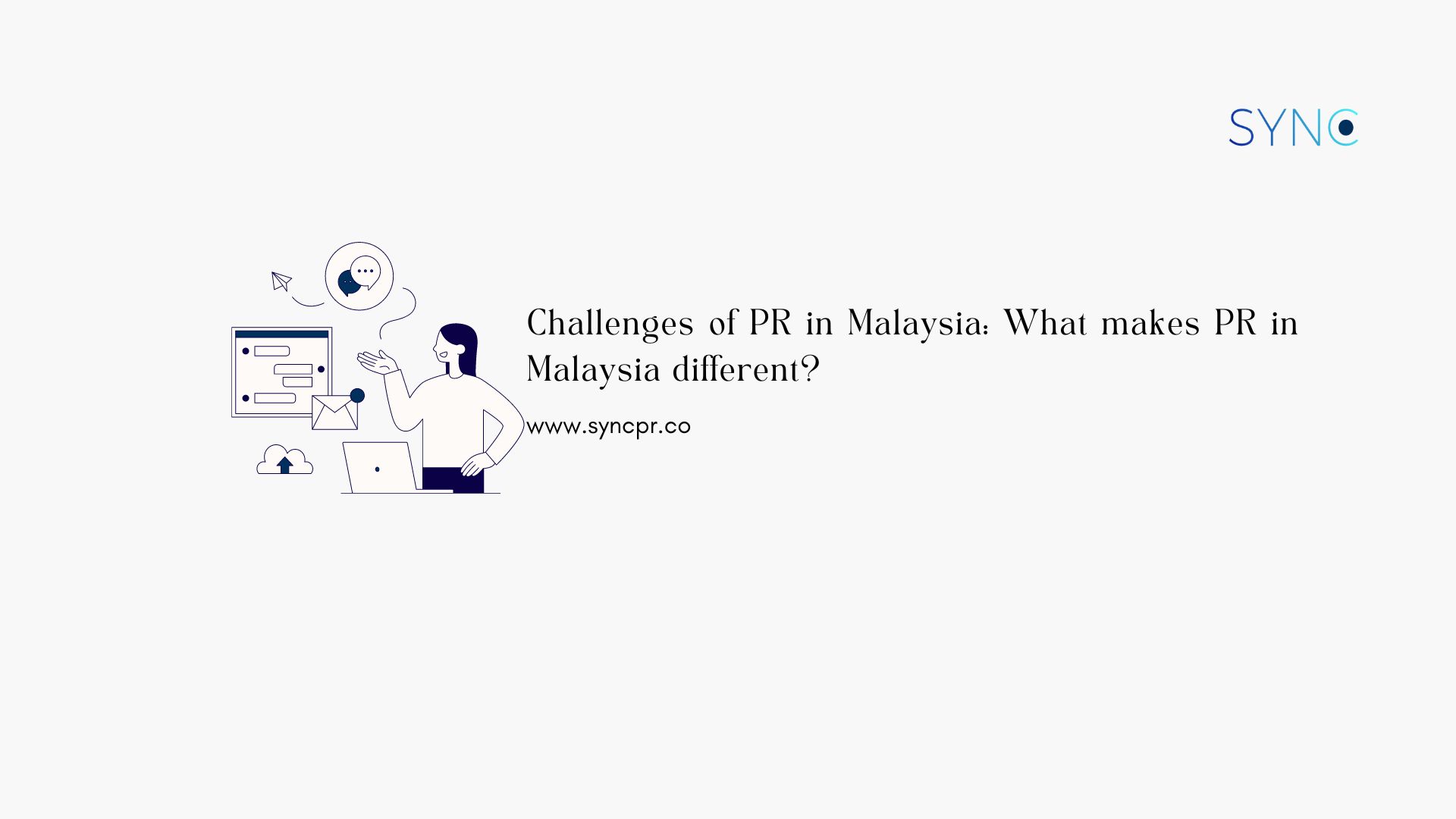(Article 1 of a two-part series)
What makes PR in Malaysia different? Public Relations (PR) in Malaysia is characterised by a unique blend of factors that make it both challenging and intriguing. The country’s rich and diverse culture, along with its evolving media landscape, sets Malaysia apart from other regions. PR professionals here must skillfully navigate a multi-ethnic society with various languages and traditions while adapting to frequent media regulations. The coexistence of traditional and digital media and specific regulatory frameworks requires intricacy in its PR strategies. Successfully addressing these unique aspects is essential for creating impactful and relevant communications in Malaysia.
Factors that differentiate PR in Malaysia
Cultural diversity
Malaysia is a multi-ethnic nation primarily composed of three major groups: Malays, Chinese, and Indians, along with various indigenous groups. Each group has its traditions, values, and beliefs, which can significantly influence how messages are received. For example, the Malay community might follow particular religious and social customs, while the Chinese and Indian communities each have their unique traditions and practices. PR campaigns must steer clear of stereotypes and ensure that their messaging is respectful and inclusive.
Naturally, differences in cultures would cause a difference in communication styles. In Malaysia, where the culture is highly contextual, meaning is derived not just from words but also through context and relationships, leading to a preference for indirect communication. This communication style is often conveyed to avoid confrontation. This can be seen via the communication style towards different cultures. For example, the Chinese community prefers directness in communication as compared to the Malay community, where they may favour more indirect communication to maintain harmony.
As Malaysia represents a multi-ethnic society, it also represents a multilingual society where several languages are spoken. The linguistic diversity adds complexity to PR strategies, as practitioners need to be wary of message localisation as well as any potential regional dialects and nuances.
Malaysia’s evolving media landscape
The media landscape in Malaysia is The media landscape in Malaysia is complex and multifaceted, significantly influencing PR strategies and practices. PR professionals must adeptly manoeuvre through these complexities to effectively deliver their messages and connect with their audiences. The Malaysian government exercises substantial control over media content, which poses challenges when dealing with sensitive issues, especially those concerning race, religion, and politics. As a result, PR campaigns need to manoeuvre through these limitations cautiously to prevent backlash or censorship.
Malaysia has prospered largely due to its early embrace of advanced technologies and innovative business models that fuel broader economic development. Naturally, this also affected the media landscape, where it has been slowly shifting towards a more digital environment. In particular, Malaysia’s accessibility towards the internet – where 97.4 per cent of Malaysians have access to the internet. Despite the trend of modernisation, traditional media still plays a huge role in communication for the population.

To this note, a report done by the National Union of Journalists Malaysia (NUJ) in 2021, highlighted the fact that 72 per cent out of 1203 respondents believe that traditional communication channels such as television and radio are still the most reliable source of news and information, followed by the newspaper at 56 per cent. As such, traditional media remains a significant part of Malaysia’s media landscape. Traditional communication channels still have a substantial reach and influence towards the general populace of Malaysia.
Consumer behaviour in Malaysia
Understanding and addressing the diverse consumer behaviours in Malaysia is a significant challenge for PR practitioners. Malaysia’s population is marked by various preferences, habits, and values influenced by cultural backgrounds, socioeconomic status, and generational differences. Crafting effective PR strategies requires a deep understanding of the varying consumer behaviours to ensure that messages resonate and drive engagement.
Taking into consideration both the importance of ethnic nuances and the trend of modernisation in the media landscape, the communication style and the influence of communication mediums are pivotal in effectively guiding the consumers to a narrative that would be positive for them. One of the channels that PR practitioners can utilise, is through social media. Malaysians are avid users of social media, with 18.8 per cent of users on Facebook and 14.0 per cent of users on Instagram. PR strategies should focus on creating shareable content that encourages engagement, such as contests, polls, and interactive posts.
Additionally, In Malaysia, influencer culture has emerged as a significant force in shaping consumer behaviour and brand image. With a diverse populace engaging across various social media platforms, influencers are the trusted connectors between brands and their audiences, presenting messages in an authentic and relatable manner. Many local influencers have built loyal communities that appreciate their insights and recommendations, prompting brands to leverage these partnerships for both reach and credibility. As consumers increasingly prefer genuine endorsements over traditional advertising, influencer marketing in Malaysia has transformed into a strategic approach that combines storytelling, lifestyle, and community engagement, making it a vital component for brands looking to connect with today’s Malaysian consumers.
How can practitioners of PR in Malaysia take advantage of these unique traits?
In summary, professionals in PR in Malaysia face unique challenges, such as navigating a multi-ethnic society, and managing a fragmented media scene, all while addressing varied consumer behaviours.
To succeed, PR practitioners must have a deep understanding of local cultural characteristics and media dynamics. By applying this knowledge and developing culturally aware, targeted strategies, they can effectively engage with Malaysia’s diverse population. The distinct nature of these challenges makes Malaysian PR a dynamic and continuously evolving field, shaped by its need to adapt and respond to the complexities of its audience.
We will get into details about the solutions to tackling these challenges, in the next article in this series. Stay tuned!
If you want to understand PR in Malaysia and how it can help your business, drop us an email at hello(a)syncpr.co.

